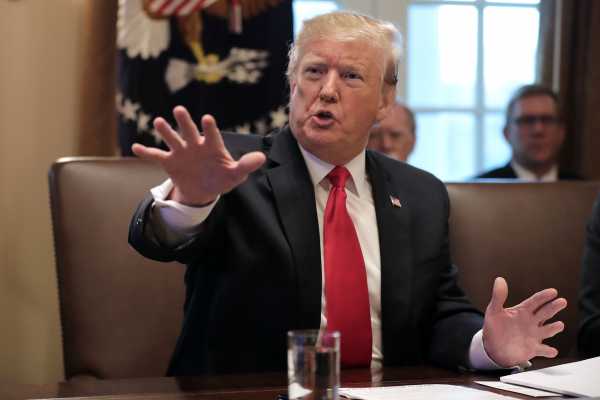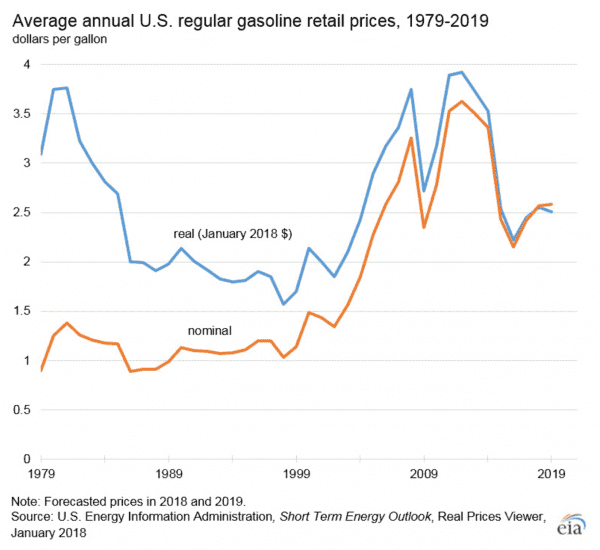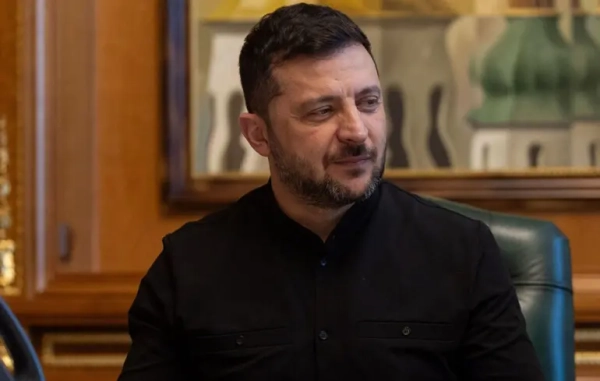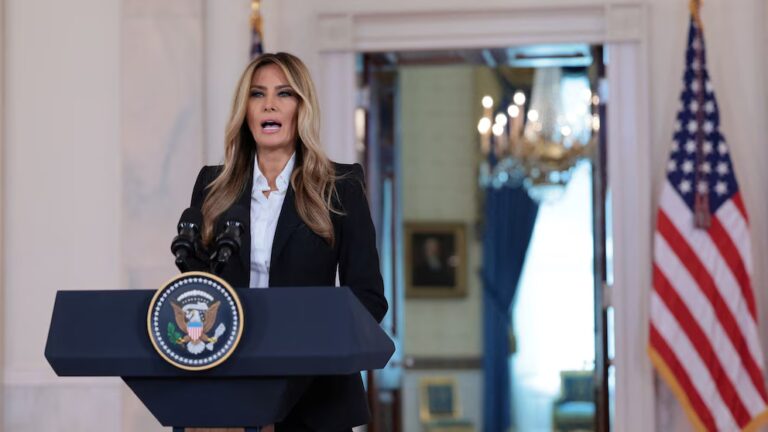
Since the stock market is no longer cooperating with his wishes and the global economy is looking a little shaky, President Donald Trump would now like to draw your attention to the price of gas.
Trump has spent the better part of the first two years of his term taking credit for the stock market’s run. And in light of Wall Street’s recent turmoil, he has turned his attention to the price at the pump. He began celebrating oil prices in the final weeks of 2018 and has kept up the practice in the new year, on Twitter and in meetings bragging that gas prices right now aren’t as high as they have been in the past. He’s also been taking credit.
It is true that gas is cheap in many parts of the country right now, including — coincidentally — many states that voted for Trump in 2016. But gas prices are fickle, and they’re historically lower in winter months than they are in the spring and summer, when more people are on the road. And while some of what’s happening right now is tied to Trump, much of it’s not, meaning that just like with the stock market, the president is tethering his success to metrics that are largely out of his control.
“No one person can take full credit for that unless they’re directly controlling their country’s gasoline prices,” Ashley Petersen, a senior oil market analyst at the energy advisory firm Stratas Advisors, said in a phone interview this week. “It’s set by the free market.”
Gas is cheap in a lot of places — for now
Trump on New Year’s Day fired off a pair of tweets celebrating cheap gas, predicting that prices would get even lower this year and saying it’s “like another Tax Cut!”
In a Cabinet meeting at the White House on Wednesday, Trump — seemingly conflating the price of gas with the price of oil — said that gasoline is “way down” from $83 a barrel (presumably of oil) of last year and implied that without him, it would have gone to $125.
“I called up certain people and said, ‘Let that damn oil and gasoline, you let it flow, the oil,’” Trump said. Had he not intervened, he added, there would have been a “recession, depression, like you’ve had in the past.”
There’s a lot going on here. For one thing, oil and gasoline are not the same, and while the price of oil a big factor in determining how much gas costs, it’s not the only one. According to the US Energy Information Administration, crude oil comprised about 61 percent of the average retail price for regular grade gas from 2008 to 2017, and in 2017 it was 50 percent. The rest is fairly evenly split between refining costs and profits, distribution and marketing, and taxes.
Oil is trading at about $45 per barrel at the moment, significantly lower than the $80 it was at in October, which caused speculation it could go as high as $100.
Gas is cheap in many parts of the country as well. According to AAA, gas prices fell to below $2 per gallon in nine states at the end of 2018, and it’s hovering just above $2 in multiple others. The average price of gas, nationally, is $2.25, lower than a month ago, when it was at $2.47, and a year ago, when it was at $2.49.
Some analysts believe that, on average, the price of gas this year will wind up lower than last. Tom Kloza, global head of energy analysis at fuel supply chain tracking company the Oil Price Information Service (OPIS), said that gas prices averaged $2.72 for 2018, and his team believes the average will be $2.55 in 2019. But prices will vary by season (gas prices are typically lower in the winter than they are the summer) and location, as they always have.
“We will see gasoline prices go up in the spring and probably in the early summer, and wherever they go up to, they will drop precipitously in the last 100 days of the year,” Kloza said. “We’ve seen that in spades this year, but it has virtually nothing to do with presidential politics.”
Right now, gas is cheaper in the South and the Midwest (many states that supported Trump in 2016) and more expensive on the West and East Coasts (which did not back Trump). Kloza emphasized that that’s a coincidence and has “very little to do with anything that’s part of executive policy.”
On average, gas prices are lower than they were when they spiked about a decade ago, but they’re still higher than they have been in the past few years.

That’s not to say that many Americans won’t be happy to be paying a lower price at the pump, including after the holiday shopping season.
“The bigger question is will these low prices persist through the summer season,” Peterson said. “what really helps consumers is when summertime prices re more reasonable.”
Some of why oil — and therefore, gas — prices are low is related to Trump. But not all of it.
There are a lot of reasons why oil prices are lower now than they were a few months ago. As the Wall Street Journal’s Sarah McFarlane and Pat Minczeski laid out in October, the global supply of oil is outpacing demand right now, oil inventories (basically, the amount of oil in storage) are on the rise, and the US is increasing how much oil it’s pumping. There’s also more Iranian oil in the market than expected, and Russia and Saudi Arabia have been ramping up production as well.
A lot of that has nothing to do with Trump, but some of it does — namely, what’s happening with Iran. Trump withdrew the US from the Iran deal last spring and reimposed sanctions on the country in November, but with a caveat: The US granted waivers to eight countries letting them at least temporarily keep buying oil from Iran, including China, India, and South Korea. The waivers are fairly open-ended, and they don’t have specifications about wind-down periods or volumes.
Trump had already been pushing Saudi Arabia to keep its supply up — presumably to help make up for the difference if the supply from Iran were to be cut off. But since Iranian oil isn’t off the market, he has instead triggered concerns about oversupply.
Trump’s trade disputes and concerns they could slow economic growth and, in turn, hurt demand, is pushing prices down, too.
OPEC and its partners in December made a deal to cut oil production for the first six months of the year, which could push up oil and, in turn, gas prices. (Trump had lobbied against production cuts.) OPEC will meet again in April to review its decision again. If it doesn’t stick with the cuts throughout 2019, that could potentially keep prices lower. It’s also unclear whether the Trump administration will extend the Iran sanctions waivers it granted last year.
Low oil prices aren’t a net positive or negative
While Americans certainly aren’t mad about paying lower gas prices thanks, at least in part, to low oil prices, the scenario isn’t that simple for the economy or for Trump.
Oil producers, including in the US, are likely to struggle if the price of oil stays too low. Trump has positioned himself as a friend of the oil and gas industry, many segments of which don’t want prices to stay too low for too long.
“The president counts among his friends a lot of energy executives,” Kloza said.
And if oil demand stays low globally, that might signal some broader problems with world economies. “If it extends through the entire year, that means global demand isn’t picking up, which means there is something wrong with the economic picture,” Peterson said. “That’s a much bigger problem than saving 20 cents a gallon.”
But for now, Trump, who on Wednesday claimed the stock market had experienced some sort of metaphorical “glitch” in December and would soon be on the up-and-up again, has decided he wants to tout oil and gas prices instead. Americans probably won’t be too thrilled when they look at their 401(k)s right now, so he’d rather they look at their gas station receipts.
Sourse: vox.com






